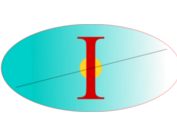Citation:
| baer2008a.pdf | 400 KB |
Abstract:
A theory for the fluorescence resonance energy transfer (FRET) between a pair of semiconducting nanocrystal quantum dots is developed. Two types of donor-acceptor couplings for the FRET rate are described: dipole-dipole (d-d) and the dipole-quadrupole (d-q) couplings. The theory builds on a simple effective mass model that is used to relate the FRET rate to measureable quantities such as the nanocrystal size, fundamental gap, effective mass, exciton radius, and optical permittivity. We discuss the relative contribution to the FRET rate of the different multipole terms, the role of strong to weak confinement limits, and the effects of nanocrystal sizes. (C) 2008 American Institute of Physics.
Notes:
RBaer-Publication



